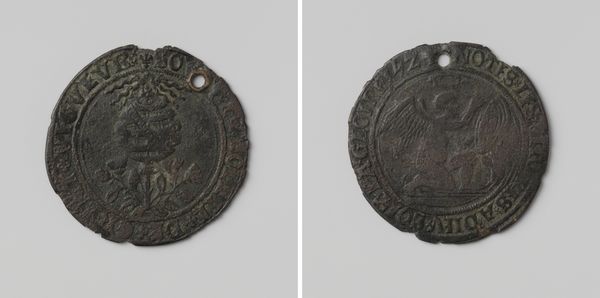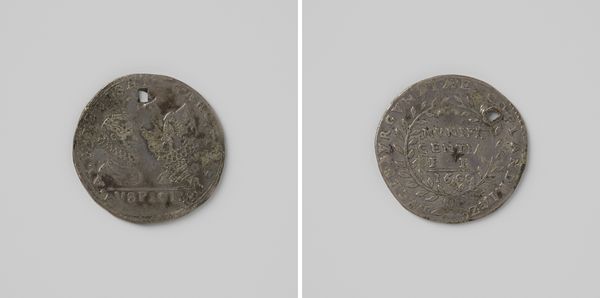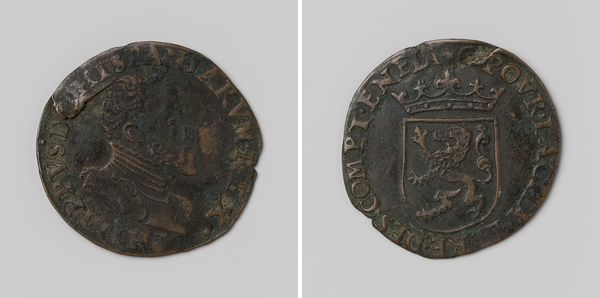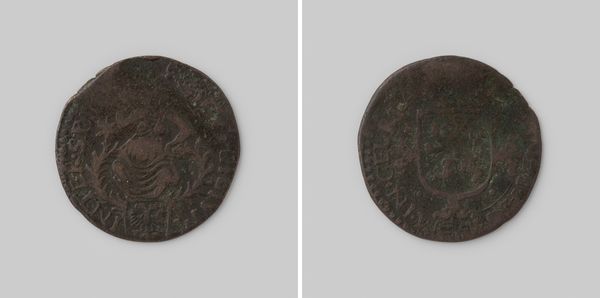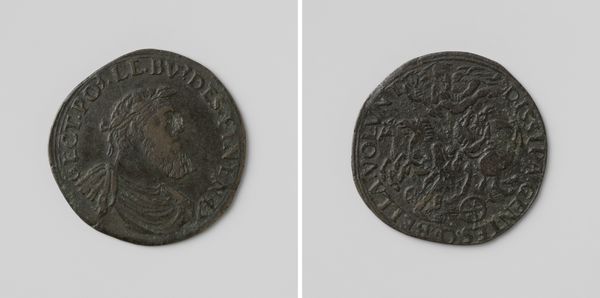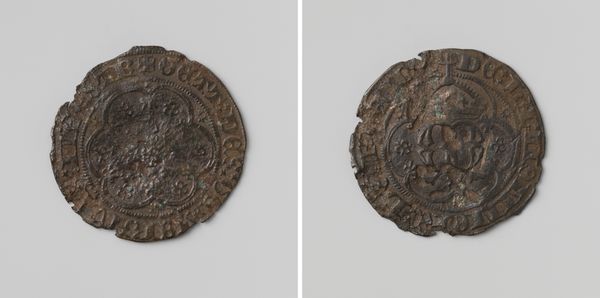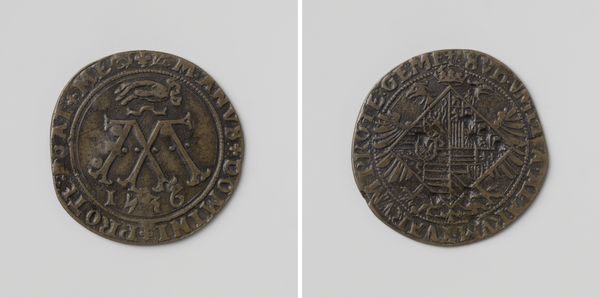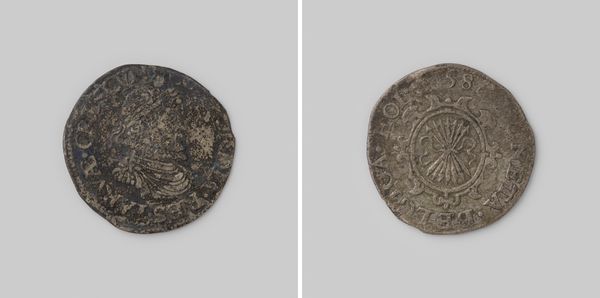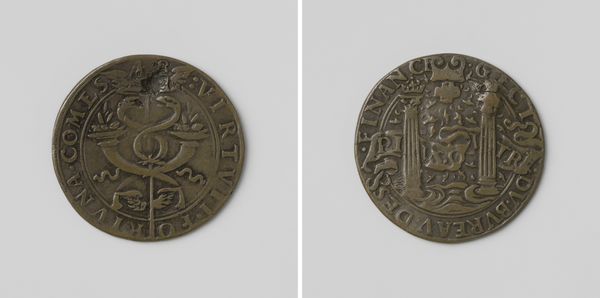
Bijeenkomst van het kapittel van de Orde van het Gulden Vlies te Mechelen, rekenpenning van de munt van Vlaanderen 1491
0:00
0:00
carving, metal, relief, sculpture
#
portrait
#
medieval
#
carving
#
metal
#
sculpture
#
relief
#
11_renaissance
#
sculpture
#
carved
Dimensions: diameter 2.9 cm, weight 3.60 gr
Copyright: Rijks Museum: Open Domain
Editor: Here we have a medal from 1491, created anonymously, commemorating the meeting of the Order of the Golden Fleece in Mechelen. It’s metal, of course, and has some really intricate carvings. What can you tell us about it? Curator: What strikes me is the direct connection between the coin, labor, and power. Who was minting these coins? What social class did they belong to? Understanding that socio-economic context is fundamental to comprehending the circulation of not only wealth, but power and status during the Renaissance. Editor: That's a great point. I hadn't considered the labor involved beyond the artistic skill. So, you're saying that looking at who made it, and how it was distributed, tells us more about the piece than just its aesthetic value? Curator: Precisely. The medal is, after all, a mass-produced item designed for dissemination. The very materiality of it – the base metal used, the precision of the carving reflecting guild expertise - informs us about Flemish commercial prowess and craft production at the time. What impact does considering the coin's utility as a trade item or a commemorative object have? Editor: It shifts my focus from the symbolic meaning to the tangible reality of the coin in circulation, and who was using it. How widely circulated would it have been, and how accessible? Curator: Indeed! The social and material implications are endless to consider: Did these objects contribute to, or reinforce, existing societal hierarchies, perhaps? Were they used to incentivize work and loyalty, to build the Order’s prominence? These considerations allow for the metal work to be viewed as an instrument of power, an artifact interwoven into daily medieval life and work. Editor: This is really helpful, thank you. It really does change the way I see objects like this. I’ll try to remember to look beyond the aesthetics and think about the wider material implications next time. Curator: Excellent! Let’s continue this exploration together!
Comments
No comments
Be the first to comment and join the conversation on the ultimate creative platform.


